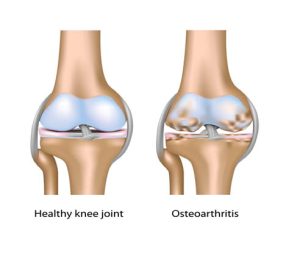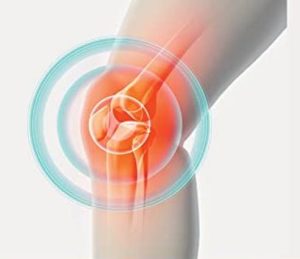 Osteoarthritis is the most common form of arthritis, affecting millions of people worldwide. It occurs when the protective cartilage that cushions the ends of your bones wears down over time. Although osteoarthritis can damage any joint, the disorder most commonly affects joints in your hands, knees, hips and spine.
Osteoarthritis is the most common form of arthritis, affecting millions of people worldwide. It occurs when the protective cartilage that cushions the ends of your bones wears down over time. Although osteoarthritis can damage any joint, the disorder most commonly affects joints in your hands, knees, hips and spine.
Symptoms of Osteoarthritis
- Joint pain, especially when you use the joint or at the end of the day
- Joint stiffness, especially after rest, but usually improves with movement
- Tenderness around the joint
- Loss of flexibility in the joint
- Grating sensation in the joint
- Bone spurs (osteophytes) around the joint
- Swelling in the joint
Causes of Osteoarthritis
 The exact cause of osteoarthritis is unknown, but several factors can contribute to its development, including:
The exact cause of osteoarthritis is unknown, but several factors can contribute to its development, including:
- Age: Osteoarthritis is more common as you get older.
- Obesity: Excess weight puts extra stress on your joints, especially your knees and hips.
- Joint injury: A previous injury to a joint, such as a fracture, torn ligament or meniscus tear, can increase your risk of osteoarthritis later in life.
- Repetitive stress on a joint: Jobs or activities that involve repetitive stress on a particular joint can increase your risk of osteoarthritis in that joint.
- Genetics: Some people are more genetically predisposed to developing osteoarthritis than others.
- Abnormal joint formation: People born with malformed joints or weakened cartilage are more likely to develop osteoarthritis.
Diagnosis of Osteoarthritis
There is no single test to diagnose osteoarthritis. Your doctor will likely diagnose osteoarthritis based on your symptoms, a physical examination and X-rays of the affected joint(s). In some cases, your doctor may also order other imaging tests, such as an MRI scan, to get a better look at the joint.
Treatment of Osteoarthritis
 There is no cure for osteoarthritis, but there are treatments that can help manage the symptoms and slow the progression of the disease. Treatment options for osteoarthritis may include:
There is no cure for osteoarthritis, but there are treatments that can help manage the symptoms and slow the progression of the disease. Treatment options for osteoarthritis may include:
- Exercise: Regular exercise is one of the most important treatments for osteoarthritis. Exercise helps to strengthen the muscles around the joint, which can help to support and protect the joint. Exercise can also help to improve flexibility and range of motion in the joint.
- Weight loss: If you are overweight or obese, losing weight can help to reduce stress on your joints and improve your symptoms.
- Pain medication: Over-the-counter pain relievers, such as acetaminophen or ibuprofen, can help to relieve pain and inflammation. In some cases, your doctor may prescribe stronger pain medication.
- Physical therapy: Physical therapy can help you learn exercises to strengthen the muscles around your joints and improve your flexibility and range of motion.
- Heat or cold therapy: Applying heat or cold to a sore joint can help to relieve pain and inflammation.
- Assistive devices: Assistive devices, such as canes, walkers or braces, can help to take stress off your joints and make it easier to get around.
- Surgery: In some cases, surgery may be an option to treat osteoarthritis. Surgery can involve repairing damaged cartilage, realigning bones or replacing a severely damaged joint with an artificial joint.
Living with Osteoarthritis
Osteoarthritis is a chronic condition, but there are things you can do to manage the symptoms and live a full and active life. Here are some tips for living with osteoarthritis:
- Maintain a healthy weight.
- Exercise regularly.
- Apply heat or cold to sore joints.
- Use assistive devices as needed.
- See your doctor for regular checkups.
